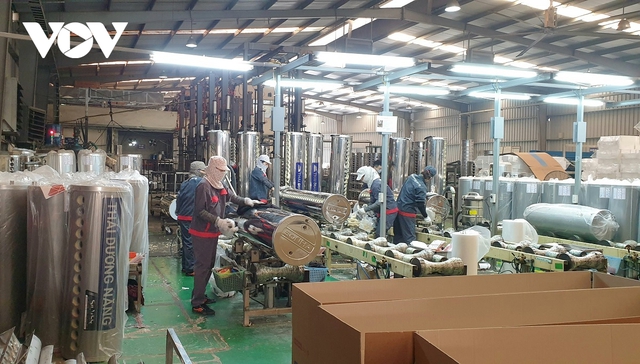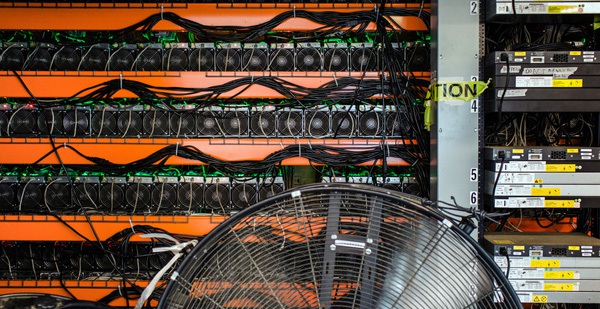Slow energy transition: Where is the solution?
Energy transition is an activity to promote the energy transition towards green on the basis of meeting the energy supply from clean fuel through the development of renewable energy (renewable energy) and the “low carbon” strategy. ”, deeply reduce CO2 emissions, use energy efficiently. Energy transition is a global trend to meet the requirements of building and developing a sustainable economy against climate change, and Vietnam is not an exception to this trend.
Three goals of energy transition in Vietnam are: ensuring energy security (sufficient electricity supply and required quality); provide energy at an acceptable cost and fulfill Vietnam’s environmental protection commitments to the international community. On that basis, Vietnam identified two important pillars for energy transformation, namely: rapid development of renewable energy sources associated with economical and efficient use of energy. This is also a recommendation that experts and international organizations consider appropriate for Vietnam.

Workshop producing solar water heater Thai Duong Nang (Son Ha Group)
However, in the actual implementation process, to achieve the goal of “ensure energy security – ensure supply stability at reasonable prices has posed a big challenge for this process.
“The first is to increase energy efficiency, how to use our existing energy more efficiently… Second, renewable energy is a source that can be easily mobilized and investors are ready to go. ready to dodge. So how to ensure that our policies are harmonized…”, asked Ms. Vu Chi Mai, an expert on the Energy Support Program – under the German Organization for International Cooperation (GIZ).
Specifically with renewable energy, according to experts, over the past time, Vietnam has developed very quickly solar power sources, has been and continues to invest in wind power – two renewable energy sources with strengths of Vietnam. Currently, the rate of renewable energy accounts for 30% of the installed capacity of the national power system. However, in order to promote the available capacity of this power source, Vietnam must invest more in stable and flexible power sources (such as stored hydroelectricity) as well as in energy storage systems. storage for solar power plants.
Another big challenge pointed out by experts is that the need to switch and replace traditional fuels from gasoline, oil, coal, gas to electricity is huge. On the positive side, the reduction of these traditional fuel sources will help reduce emissions to the environment, but the pressure on the electricity industry will be great, if there is no synchronous development of clean power sources associated with the use of electricity. energy saving and efficient.
“There is a shift from using fossil fuels to using electricity, mostly transportation and then the needs of commercial buildings… we all move back to using electricity… Now motorbikes There are also electric motorbikes, cars have electric cars, buses now also have electric buses. Then the buildings gradually also use sources such as fuel oil… There have been trends of switching, shifting from using coal and oil sources for industrial needs, now they also switch to using using electric motors, electric furnaces… The pressure here goes back to the story that the electricity industry must have a green transition for its supplies, but there are significant challenges in terms of resources. provided to meet the green criteria again. Therefore, Vietnam is imperative to promote the issue of economical and efficient use of energy…”, said Mr. Ha Dang Son – Director of the Center for Energy Research and Green Growth (under the Union of Scientific Associations) and Vietnamese techniques) states the facts and recommendations.
Sharing the same view, energy expert Nguyen Anh Tuan, former Deputy Director of the Institute of Energy (Ministry of Industry and Trade), said that in the national electricity development strategies (electricity master plans), the use of energy Savings and efficiency have also been taken into account with ever higher targets. Even in the most recent Draft Power Master Plan 8, specific requirements for reducing energy consumption intensity and electricity elasticity (which is the ratio between the growth in electricity demand and the of GDP) was also given.
Specifically, in the period of 2021-2025, it will be reduced to 1.24-1.3; in the period of 2025-2030, it will be reduced to less than 1.2 (to 1.1-under 1) and in the later period to 2045 to less than 0.5… However, according to Mr. Nguyen Anh Tuan, without careful calculations Concerning the transition from fossil fuels to electricity of many industries (such as transportation, industry, construction, etc.), in both the short and long term, the risk of electricity shortage is very great.
“Regarding the Netzero commitment, on the one hand, we are using it economically and efficiently, but on the other hand it is a shift from using other fossil fuels: from using gas, using oil, using coal. to electricity. Maybe not today, tomorrow, not 2-3 years from now, but in the medium term, this elastic coefficient it does not decrease as fast as this. Because with commitments not only to Vietnam but more than 140 countries around the world, not only do we switch to electricity, but many countries also switch, they also reduce coal and oil,” said Nguyen Anh Tuan. .
According to the National Target Program’s report on economical and efficient use of energy, the potential for energy saving in Vietnam is still very large, it can be calculated up to 20-30%. In some key industries, which use a lot of energy such as cement, iron and steel, chemicals, etc., if modern and synchronous technology is applied, residual heat and waste from factories can be recovered for recycling. When using and producing electricity, the ability to save energy is much higher. This is an important basis to help Vietnam implement the emission reduction roadmap, fulfill the commitment to bring net emissions to zero (Netzero) by 2050./.
at Blogtuan.info – Source: cafebiz.vn – Read the original article here



